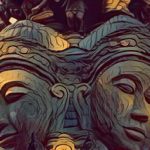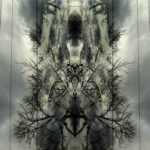Recent Comments
- Vajragoni on Speeding-forth in All Directions
- Scott on Speeding-forth in All Directions
- Vajragoni on The Tathāgata’s Dharma-body
- Ardent Hollingsworth on The Tathāgata’s Dharma-body
- Jim on The Black Dragon Eye Mandala: A Singular Focal-point of the Unmoving Principle
-
Recent Posts
Categories
- A Darkness Visible
- A Docetic Assessment
- A Mystical Odyssey through the Sagathakam
- Akṣayamatinirdeśasūtra
- Akṣhobhya’s Pure Land
- Ālaya-vijñāna
- Anūnatvāpūrṇatvanirdeśaparivarta
- Ariyapariyesanā Sutta
- Ascending the Noble Mountain of Primordial Perfection
- Asceticism
- Ashtavakra Gita in Light of the Unborn
- Audiobook
- Bankei Zen
- Beyond the Ascent
- Beyond the Rainbow Body
- Black Dragon Eye Mandala
- Bodhicitta
- Buddhism’s Black Holes
- Buddhist Anecdotes
- Buddhist Hells
- Buddhist Meditations on the Tarot
- Chuang-Tzu
- Contemporary Musings
- Ḍākiṇī
- Dāsbodh
- Dharmakaya Abbey
- Dharmakaya Stick
- Divine Revelation
- Doctrine of the Void
- Dust Contemplation
- Ekacitta: Advanced Studies in Dark Zen
- Entry into the Dharmadhātu
- Eremitical Dhyani Meditations
- Exploring the Book of Revelation
- Gnostikos
- Hsin Hsin Ming
- Journey to the Center of the Mind
- Karma and Rebirth
- Korean Sŏn
- Kulayarāja Tantra—The Motherly Buddha
- Little Office of Our Lady of the Void
- LSD and Psychedelic Buddhism
- Māṇḍukya Kārikā
- Mañjuśrī Teaches Prajñāpāramitā
- Māra and Satan
- Meister Eckhart
- Mud and Water: Bassui Zen
- Mystagogia
- Nirvana
- Notes from the Iron Stupa
- Nothingness in Nāgārjuna and John of the Cross
- Obscure Religious Cults
- Preparation for the Afterlife
- Primordial Qigong
- Reflections on the Saṃdhinirmocana Sūtra
- Spirituality
- Springtime with Tozen
- Terma: A Mind Film by Vajragoni
- The Afterglow
- The Awakening of Faith
- The Bhagavad Gita
- The Book of Bodhi
- The Cloud of Unknowing in Light of the Unborn
- The Diamond Sutra
- The Divine Ātman
- The Divine Liturgy of Vajrasattva
- The Doctrine of Awakening
- The Dragon Mind of Zen Tarot
- The Elucidation of Consciousness
- The Experience of No-Self
- The Great Perfection of the Unborn Mind: A Book of Privy Counseling
- The Heart Sutra
- The Hermit's Den
- The Khaggavisāṇa Sutta: A Rhinoceros Horn
- The Lankavatara Sutra
- The Lankavatarian Book of the Dead
- The Lion's Roar of Queen Śrīmālā
- The Lotus Sutra
- The Mahāparinirvāṇasūtra
- The Naga Chronicles
- The Platform Sutra
- The Ratnagotravibhāgaśāstra
- The School of the Spirit
- The Secret Golden Light of the Unborn
- The Soul
- The Śūrańgama Sūtra
- The Sutra of Primordial Enlightenment
- The Tathāgatagarbhatārā Tantra
- The Udāna
- The Unborn Mind Mythos
- The Unborn Mind Sessions
- The Unborn Odyssey: A Novel
- The Vajrasamādhi Sutra
- The Vimalakirti Sutra
- The Yogasūtras of Patañjali
- The Zen Teaching of Bodhidharma
- The Zen Teaching of Instantaneous Awakening
- The Zen Teachings of Huang Po
- Theologia Mystica
- Tozen Teaching
- Tsung-mi: An Intimate Study
- Unborn I Ching
- Unborn Light Reiki
- Uncategorized
- Vasubandhu and the Absolute
- Wisdom from the Masters
- Wordsworth and Zen
- Yoga of the Manomayakāya
- Zen
- Zuowang
Archives
- February 2024
- January 2024
- December 2023
- November 2023
- October 2023
- September 2023
- August 2023
- July 2023
- June 2023
- May 2023
- April 2023
- March 2023
- February 2023
- January 2023
- December 2022
- November 2022
- October 2022
- September 2022
- August 2022
- May 2022
- April 2022
- March 2022
- February 2022
- January 2022
- December 2021
- November 2021
- October 2021
- September 2021
- August 2021
- May 2021
- April 2021
- March 2021
- February 2021
- January 2021
- December 2020
- November 2020
- October 2020
- September 2020
- August 2020
- May 2020
- April 2020
- March 2020
- February 2020
- January 2020
- December 2019
- November 2019
- October 2019
- September 2019
- August 2019
- June 2019
- February 2019
- January 2019
- December 2018
- October 2018
- August 2018
- April 2018
- March 2018
- February 2018
- January 2018
- December 2017
- November 2017
- October 2017
- September 2017
- August 2017
- May 2017
- April 2017
- March 2017
- February 2017
- January 2017
- December 2016
- November 2016
- October 2016
- September 2016
- August 2016
- July 2016
- May 2016
- April 2016
- March 2016
- February 2016
- January 2016
- December 2015
- November 2015
- October 2015
- September 2015
- August 2015
- July 2015
- June 2015
- May 2015
- April 2015
- March 2015
- February 2015
- January 2015
- December 2014
- November 2014
- October 2014
- September 2014
- August 2014
- May 2014
- April 2014
- March 2014
- February 2014
- January 2014
- December 2013
- November 2013
- October 2013
- September 2013
- August 2013
- May 2013
- April 2013
- March 2013
- February 2013
- January 2013
- December 2012
- November 2012
- October 2012
- September 2012
- August 2012
- May 2012
- April 2012
- March 2012
- February 2012
- January 2012
- December 2011
- November 2011
- October 2011
Meta
Tag Archives: svabhāva
You Are a Tiny Spiritual Grain of Sand

Being a series of Unborn Mind Sessions
What is the nature of my existence?
That which asks the question has no formalized existence, nor do you. Here in Unborn Mind Zen we teach that it’s all a matter of Right Buddha Nature…This is in reference to svabhāva, or the intrinsic self-nature of the Unborn. It needs to be underscored that this is exclusively reserved for the Absolute, for *things in the phenomenal* worlds exist only conventionally and lack the Intrinsic-Self of the Unborn.
Posted in The Unborn Mind Sessions
Tagged svabhāva, Unborn Mind Sessions, Unborn Principle
Leave a comment
Svabhāva

- (Chapter II verse 156) [Cleary]: This world is representation, made of names, not there as it appears. The clusters are makers of optical illusions imagined by the naïve.
I Like Cleary’s description here of the skandhas as “clusters”. Suzuki’s translation says that the skandhas are like a “hair-net wherein discrimination goes on”; Cleary refers to this as being akin to an optical-illusion maker. We are indeed just made-up like clusters of an active imagination—just naïve and complacent dupes of our Skandhic-Overlords.
Nāgārjuna and the Two Truths

Nāgārjuna is perhaps the most celebrated philosopher-sage of Mahayana/Mādhyamika Buddhism. Despite the enormous popularity very little is actually known concerning his Biographical details apart from the generally-held belief that he lived during the 2nd century CE. While rooted in rich mythical soil, his name is in reference to the “Nagas” from whom he received the Prajnaparamita teachings. The Śatasāhasrikā-prajñāpāramitā, which the Buddha had especially entrusted to the Nagas for safekeeping, was handed over to Nāgārjuna who later propagated the teachings. In the west, he is best known for his teachings on emptiness, (śūnyatā), which he espoused during his formation of the Mādhyamika School. For our purposes in this series, his own nuanced views on śūnyatā follows most closely from the doctrine of Dependent-Origination which states that nothing within the created-order has an intrinsic-existence of its own. Indeed, the term śūnyatā has an “entirely different nuance in the Mādhyamika thought from that of other Buddhist schools and traditions.”
The Three Svabhāvas of the Tathagata-garbha

The Tathagata-garbha is three-fold in nature (Svabhāva): Dharma-kāya, Tathatā and Tathāgata-gotra. They are seen in correspondence with the nine sheathes reinforced with a purity aspect. Firstly, though, we would be remiss if neglecting to indicate the Concordance between the 9 Illustrations and the 9 Defilements. Obermiller succinctly indicates them as follows:
The Top-Ten Qualities of the Ratnagotra

We have arrived at the core-teaching of the Ratna: all sentient beings are endowed with the Buddhagarbha, or the transcendent seed (gotra) of Bodhi. It is taught as Vajra-point four–the Dhātu, or the essence of the Buddha-Element—Tathagata-garbha. As essence, the Dhātu as the inner-most nature is still best serviced by the Gotra, or the [Germ] bodhi-seed enlivening one with the spirit of Bodhi. Obermiller’s translation of the forthcoming is “And the Germ of Buddhahood exists in every living being. Therefore, forever and anon, all that lives is endowed with the Essence of the Buddha.”
Posted in The Ratnagotravibhāgaśāstra
Tagged abheda, avasthāprabheda, avikāra, dhātu, Germ, gotra, guṇa-pāramitās, Hetu, Karman, phala, sarvatraga, svabhāva, vrtti, Yoga
Leave a comment
